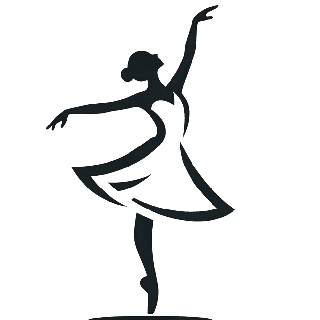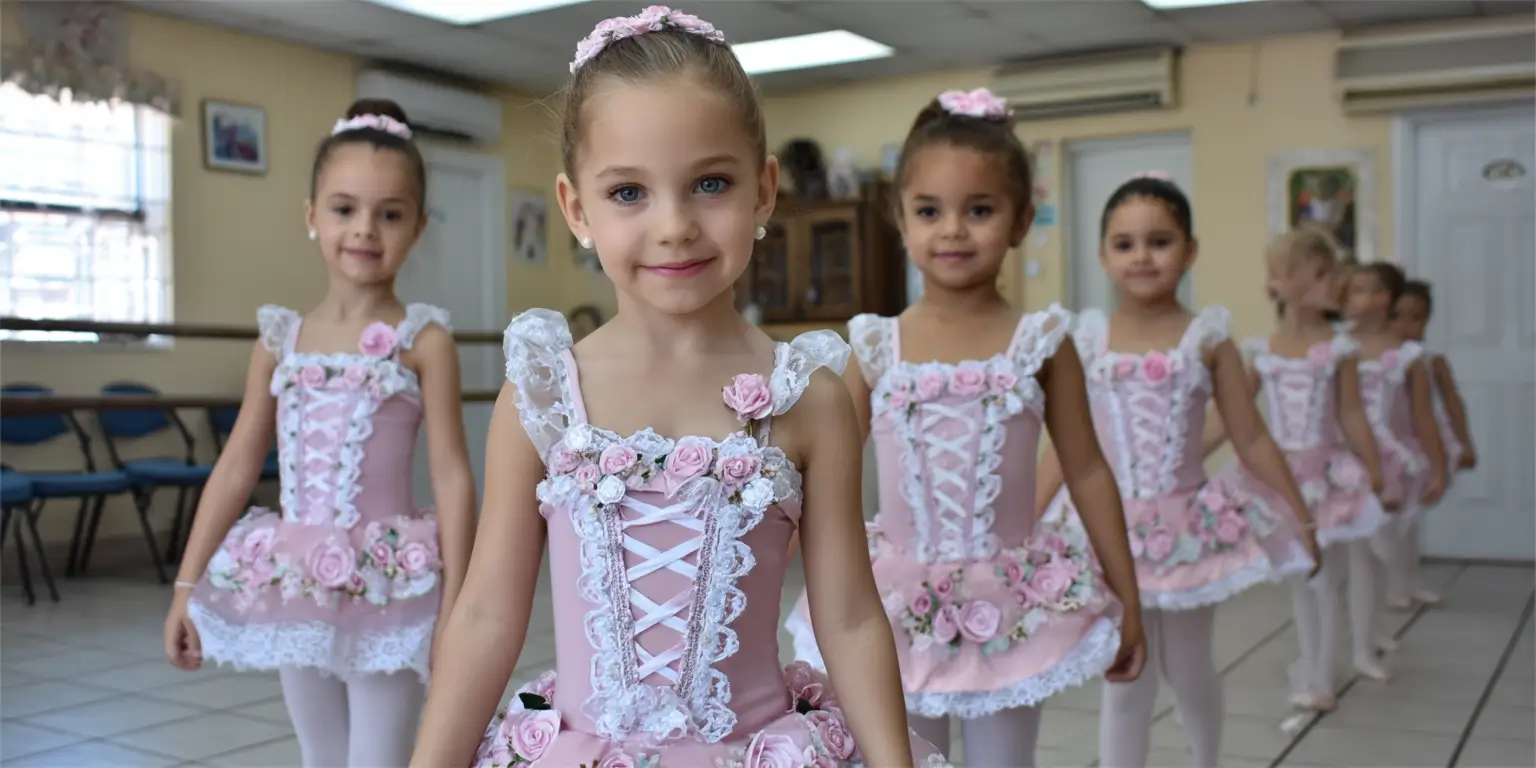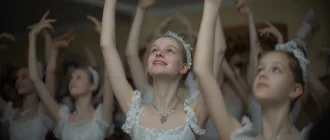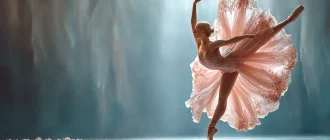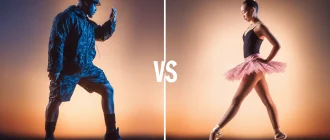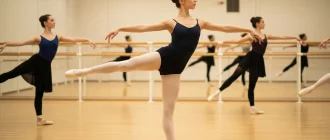Seeking the best ballet schools in Mexico? Here are the top 5 institutions renowned for their exceptional training and support for aspiring dancers.
Key Takeaways
- The National Ballet School of Mexico and Escuela Superior de Música y Danza de Monterrey emphasize comprehensive training programs integrating various dance styles, enhancing students’ technical and artistic skills.
- Ballet de Monterrey Academy offers extensive performance opportunities and innovative instructional approaches, preparing students for successful careers in ballet through real-world experiences.
- Evaluating potential ballet schools should involve visiting institutions, understanding their teaching approach, and considering financial implications to ensure the right fit for the student’s educational needs.
Best Ballet Schools in Mexico Podcast
| School | City | Distinctive Edge |
|---|---|---|
| Escuela Nacional de Danza Clásica y Contemporánea (ENDCC) | Mexico City (Coyoacán) | Flagship INBAL conservatory with 30 + years of professional-level training; graduates regularly enter major Mexican and international companies; purpose-built studios, theatre, and Black-Box stage. inba.gob.mx |
| Escuela Superior de Música y Danza de Monterrey (ESMDM) | Monterrey, N.L. | INBAL-accredited bachelor’s programs in Classical Dance; excellence recognized nationwide and abroad; comprehensive curriculum that feeds the northern professional scene. inba.gob.mx |
| Academia de la Danza Mexicana (ADM) | Mexico City (Coyoacán) | Historic school founded in 1947; 8-year Licenciatura en Danza Clásica built on the Vaganova method; more than 70 years as an incubator of leading Mexican dancers and choreographers. Academia de la Danza Mexicana |
| Escuela de Ballet de Monterrey (BdM School) | Monterrey, N.L. | The training arm of the Ballet de Monterrey company, offering ABT curriculum certification and an “Aspirante” pre-professional track that provides students with stage time in productions such as The Nutcracker. Ballet de Monterrey Escuela |
| Escuela de Ballet del Valle | Mexico City (Coyoacán) | Private academy founded in 1961; follows RAD & ISTD international syllabi; offers live-music classes from initiation through professional levels. escueladeballetdelvalle.com |
Overview of Ballet Education in Mexico
Mexico boasts a rich cultural heritage, and ballet education is a significant part of this legacy. The country has a long history of producing world-renowned ballet dancers, blending traditional and contemporary techniques to create a unique training environment. Numerous ballet schools, from the prestigious National Ballet School of Mexico to smaller, independent institutions, cater to students of all ages and skill levels.
Ballet education in Mexico is highly esteemed. Many schools offer rigorous training programs that emphasize technique and artistry. Students can expect instruction from experienced teachers who have performed with top companies worldwide.
Additionally, many schools offer master classes and workshops with guest artists, providing students with the opportunity to learn from some of the best in the industry. This comprehensive approach ensures that aspiring dancers receive a well-rounded education, preparing them for successful careers in ballet.
Importance of Choosing the Right Ballet School
Choosing the right ballet school is crucial for any aspiring dancer. A good ballet school can provide students with the proper training, guidance, and support they need to succeed in dance. Here are some factors to consider when selecting a ballet school:
- Qualifications and Experience of the Teachers: Look for teachers with a strong background in ballet and experience teaching students of all ages and levels. Experienced instructors can offer valuable insights and personalized guidance, helping each dancer reach their full potential.
- Curriculum and Teaching Methods: A well-structured curriculum is essential for comprehensive ballet education. The school should cover all aspects of ballet, including technique, theory, and performance. Additionally, incorporating contemporary dance and other styles can provide a well-rounded training experience.
- Facilities and Equipment: The school should have a safe and well-maintained dance studio with proper flooring, barres, and mirrors. High-quality facilities ensure that students can practice safely and effectively.
- Performance Opportunities: Regular performance opportunities, such as recitals, concerts, and productions, are vital for developing stage presence and confidence. These experiences allow students to showcase their skills and gain valuable performance experience.
- Community and Atmosphere: A supportive and inclusive community cultivates a passion for dance in students. Look for a school that promotes a positive atmosphere where dancers can thrive and build lasting relationships with their peers and instructors.
By considering these factors, you can find a ballet school that will provide your child or daughter with the best possible education and training in ballet. A well-chosen school can significantly impact a dancer’s development and future success.
National Ballet School of Mexico

The National Ballet School of Mexico is a beacon of excellence in the country’s ballet education landscape. Under the passionate leadership of Elisa Adame Fulks, this prestigious institution is dedicated to fostering artistic growth, scholarship, and excellence in ballet. The school is renowned for its comprehensive ballet training programs, which develop technical and creative skills.
With a rigorous training program and a commitment to developing technical and artistic skills, the school has taught several notable alums who have made significant, life-changing contributions to ballet through scholarships.
Training Programs
The training program at the National Ballet School of Mexico is meticulously designed to develop both technical and artistic skills in its students. Emphasizing classical ballet, the curriculum offers a structured path that incorporates a variety of dance styles, including contemporary and jazz, and focuses on mastering diverse dance techniques, providing a well-rounded training experience.
Students also benefit from master classes and workshops, integral to the school’s comprehensive approach to dance education.
Admission Process
Admission to the National Ballet School of Mexico is competitive and typically includes an audition. During these annual auditions, candidates must demonstrate their ballet skills and physical suitability.
Aspiring dancers should stay informed and check in about important application and audition dates each week, as these can vary weekly and yearly.
Alumni Success Stories
The success stories of the National Ballet School of Mexico’s alumni are testaments to its exceptional training. Notable figures such as Amalia Hernández Navarro, who founded and significantly promoted ballet in Mexico many years ago, and Claudia Lavista, whose choreography has gained international acclaim, highlight the school’s impact.
These alumni have excelled in their careers and made significant contributions to the global ballet community, demonstrating the high quality of education provided by the school.
Escuela Superior de Música y Danza de Monterrey
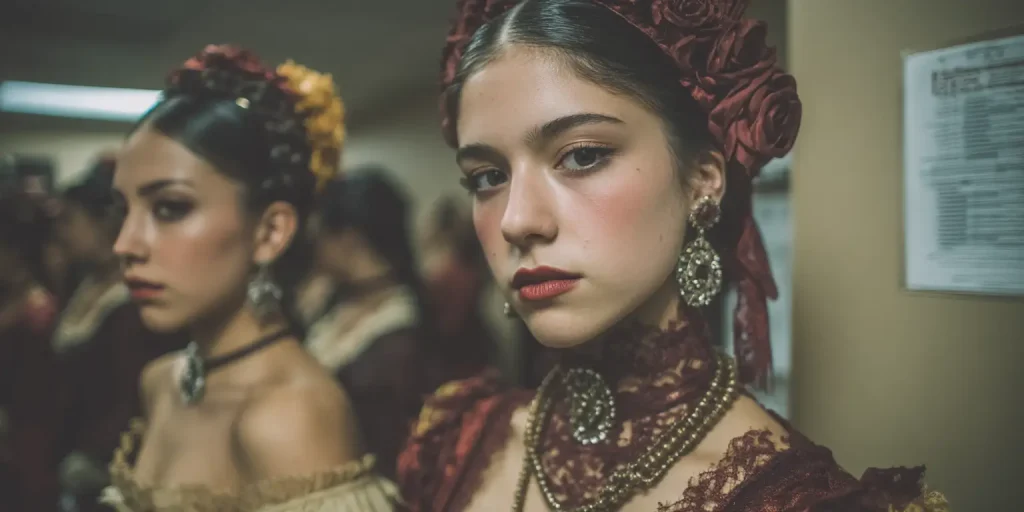
The Escuela Superior de Música y Danza de Monterrey is another prestigious institution offering a comprehensive education in dance and music. Known for its extensive curriculum and state-of-the-art facilities, the school ensures students receive a well-rounded education in various dance forms.
The experienced instructors and a team of successful alumni further enhance the school’s reputation in the dance community.
Curriculum and Classes
At Escuela Superior de Música y Danza de Monterrey, ballet is a fundamental component of the various arts curriculum, providing a first base and strong foundation for mastering other dance genres. The school offers a diverse range of classes, including contemporary dance, tap, and modern dance, ensuring that students develop versatility and artistic excellence. The school’s comprehensive approach to dance education prepares students for a range of professional opportunities.
Facilities and Resources
The facilities at Escuela Superior de Música y Danza de Monterrey are designed to meet the highest standards for dance training. The advanced dance studios, equipped with professional flooring and mirrors, provide students with a safe and effective training environment.
Additionally, the school provides weekly performance spaces that host school productions and community events. These spaces offer students real-world experiences and opportunities to showcase their talents. The facilities are designed to support high-quality dance performance and training.
Community and Culture
The supportive arts community at Escuela Superior de Música y Danza de Monterrey is fostered through various cultural activities and student-led initiatives. Faculty attitudes and student interactions shape the school’s vibrant arts culture, creating an open and enriching environment for artistic growth.
Students engage deeply with the arts through these activities, enhancing their educational experience.
Ballet de Monterrey Academy

The Ballet de Monterrey Academy was founded to offer high-quality dance education and foster a passion for ballet among its students. This esteemed academy is dedicated to artistic and technical excellence, preparing students for successful careers in ballet.
Instructional Approach
Ballet de Monterrey Academy employs an innovative instructional approach tailored to children with diverse learning styles. Instructors blend classical ballet techniques with contemporary dance methodologies, ensuring a comprehensive education for each dancer.
Performance Opportunities
Ballet de Monterrey Academy offers numerous yearly performance opportunities, including annual showcases and community events, that enhance students’ performance skills and build their confidence on stage.
These mothers and life experiences continue to play a significant role in the artistic development of children.
Partnerships and Collaborations
The academy’s partnerships with renowned international ballet companies provide students with invaluable exposure to professional environments. Regular workshops and master classes, featuring esteemed guest artists, further enrich the educational experience, fostering a vibrant community spirit and mutual respect among students.
Centro Pro-Ballet de Guadalajara
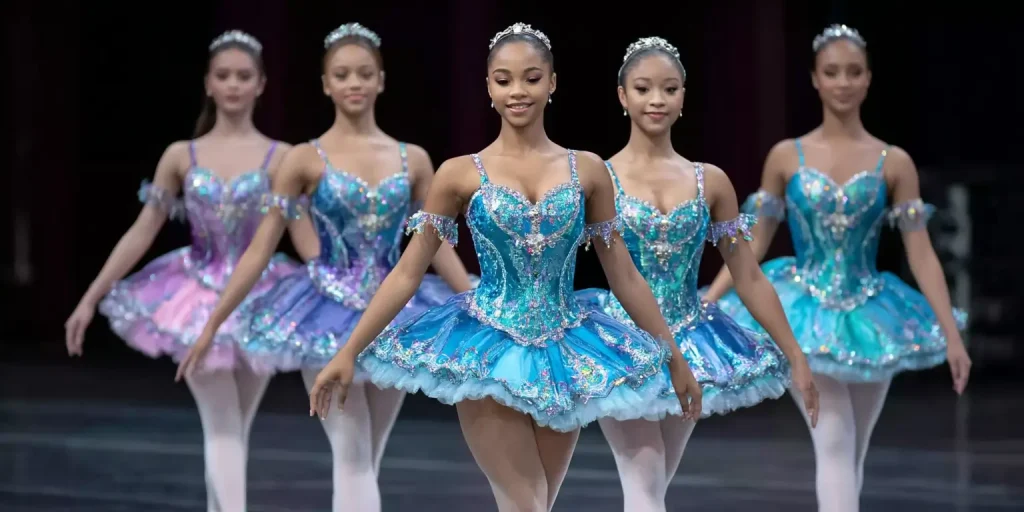
Founded ten years ago by Víctor Ruiz and Claudia Lavista, Centro Pro-Ballet de Guadalajara is a key player in the local dance scene, recognized for its commitment to reviving scholarship in contemporary dance and making significant contributions to the development of ballet in Guadalajara.
Teacher Expertise
The instructors at Centro Pro-Ballet de Guadalajara are highly qualified and possess extensive experience in various dance forms. Many of them are professional dancers who have performed internationally. The school frequently sponsors and organizes workshops and master classes led by renowned dancers and choreographers, providing students with exceptional learning experiences.
This expert guidance is crucial for shaping the future of aspiring dancers.
Student Achievements
Centro Pro-Ballet de Guadalajara students have garnered numerous accolades in national and international ballet competitions. These achievements highlight the exceptional talent and rigorous training that the school provides. Notable alums have made significant contributions to the ballet community in Mexico and abroad.
Workshops and Master Classes
Centro Pro-Ballet de Guadalajara offers a range of workshops and master classes focusing on modern dance, classical ballet, and Mexican folkloric styles. These programs enhance students’ skills and, upon completion, provide them with valuable certificates recognized by Ballet de Mexico. The dance workshops are recognized for their quality and contribution to students’ development.
Ballet Folklórico de México
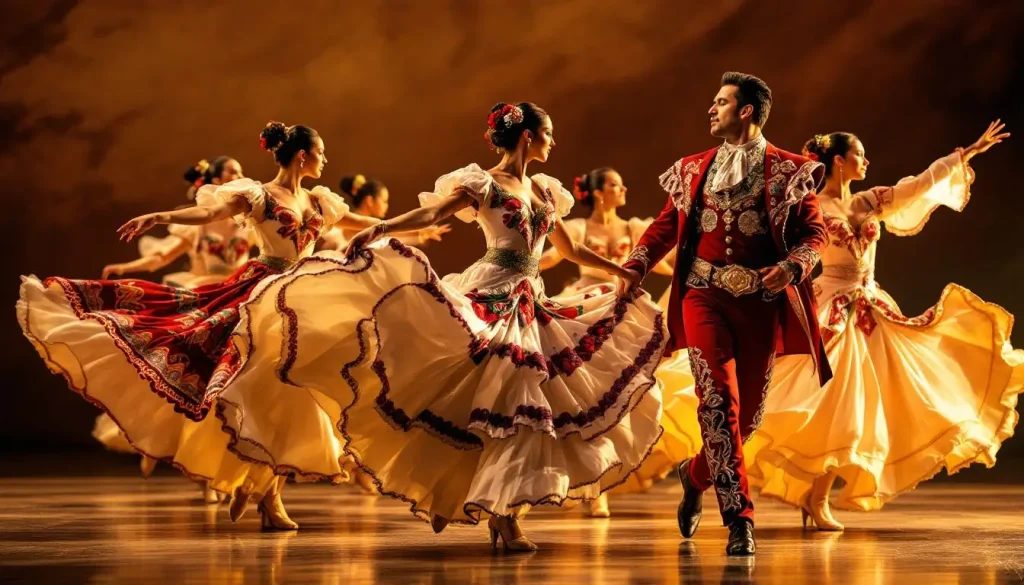
Ballet Folklórico de Mexico is renowned for its unique blend of traditional Mexican dance and classical ballet techniques. Founded to showcase Mexico’s rich cultural heritage, this institution combines the vibrancy of folkloric movements with the precision of ballet, creating a distinctive and captivating dance style.
Unique Dance Style
Ballet Folklórico de Mexico’s unique dance style incorporates traditional Mexican forms, including danza, mestizo, and bailes regionales. These traditional dance forms are integral to the school’s curriculum, enhancing students’ adaptability and equipping them with a broad range of skills for various dance styles.
Performances and Tours
The performance schedule at Ballet Folklórico de Mexico offers students numerous opportunities to gain exposure and experience. Participating in public performances and international tours significantly contributes to their artistic development and readiness for professional careers.
Cultural Impact
Ballet Folklórico de Mexico plays a crucial role in promoting Mexican cultural heritage through dance. Masterclasses and workshops focusing on traditional dances and music are open to schools, academies, and the community, fostering a deep appreciation for Mexican culture.
Under the artistic direction of Amalia Viviana Basanta Hernández, the company continues to unite people through song, the power of dance, and music, showcasing the talents of individuals like Isaac Hernandez.
Ballet Education in Mexico City
Mexico City is a vibrant metropolis with a thriving dance scene. The city offers numerous opportunities for dancers to train, perform, and grow, with multiple ballet schools, studios, and companies. These institutions provide a range of dance programs tailored to various interests and skill levels. Mexico City’s dance scene is diverse and dynamic, from classical ballet to contemporary and modern dance.
At the heart of the city’s dance scene is the National Ballet of Mexico, one of the most prestigious ballet companies in the country. Known for its technical excellence and artistic expression, the company’s dancers are highly sought after by companies worldwide. This institution sets a high standard for ballet education in the city.
In addition to the National Ballet, Mexico City is home to numerous other ballet schools and dance studios that offer classes for students of all ages and skill levels. These schools often offer programs in contemporary, modern, and different styles, ensuring a well-rounded dance education.
For instance, the School of Ballet and Contemporary Dance, situated in the heart of the city at the Auditorio de la Ribera, offers classes in ballet, contemporary dance, and modern dance, with a strong emphasis on technique and artistic expression.
Another notable institution is the Professional School of Dance of Mazatlan, a renowned dance center in Mexico. The school offers short-term, medium-term, and long-term programs in dance, known for its academic and artistic excellence. These schools make a significant contribution to the vibrant dance community in Mexico City.
Isaac Hernández, a principal dancer with the English National Ballet, exemplifies the international success that Mexican dancers can achieve. Hernández has performed with top companies worldwide and has won numerous awards, showcasing the high calibre of ballet education in Mexico.
In conclusion, Mexico City’s dance scene is vibrant and diverse. Numerous ballet schools and studios offer classes for students of all ages and skill levels. With its emphasis on technique, artistry, and performance quality, ballet education in Mexico City is highly regarded, providing students with a solid foundation for a dance career.
Opportunities for Performance and Collaboration
At our ballet school, we believe that performance and collaboration are essential parts of a dancer’s education. Here are some opportunities that we offer:
- Regular Recitals and Concerts: Our students have the opportunity to perform in regular recitals and concerts, which helps them gain valuable stage experience and confidence. These events allow students to showcase their progress and artistry to an audience.
- Collaborations with Other Schools and Companies: We partner with other schools and companies to offer our students opportunities to perform and work alongside other dancers and choreographers. These collaborations expose students to different styles and techniques, enriching their dance education.
- Choreography Competitions: We encourage our students to participate in choreography competitions, which help them develop their creative skills and showcase their talents. These competitions challenge students to think creatively and push the boundaries of their abilities.
- Community Outreach Programs: We participate in community outreach programs, offering our students opportunities to perform and share their passion for dance. These programs foster community and allow students to give back through their art.
- Master Classes and Workshops: We offer master classes and workshops led by guest teachers and choreographers, enabling our students to learn from experienced professionals and acquire new insights and skills. These sessions are invaluable for expanding students’ knowledge and enhancing their technique.
By providing these opportunities, we aim to give our students a well-rounded education in ballet and prepare them for a successful dance career. Performance and collaboration are key components of our program, ensuring that our dancers are well-equipped for the demands of the professional dance world.
Choosing the Right Ballet School

Choosing the right ballet school for children requires careful consideration of location, curriculum, teacher qualifications, and cost. Finding a school that aligns with the dancer’s goals and provides a supportive environment is paramount for their growth and development.
Evaluating Programs
Evaluating ballet programs involves speaking to current students and parents to gain insights into their experiences and the school’s teaching approach. Age-specific opportunities and milestones in dancer training are crucial to consider, as they illustrate the journey and achievements of individuals who start training at a young age. Engaging with the school community provides valuable insights into the program’s effectiveness and suitability.
Visiting Schools
Visiting schools is a crucial step in the decision-making process. Observing classes, interacting with instructors, and understanding the school’s environment can help the family determine if it is the right fit for the dancer, providing invaluable firsthand experience.
Financial Considerations
Financial considerations play a significant role in choosing a ballet school. Comparing tuition fees and exploring financial aid options can help the family manage the overall cost, ensuring the dancer’s education is excellent and affordable.
Resume
In conclusion, Mexico offers many opportunities for aspiring dancers through its top ballet schools. Each institution, from the National Ballet School of Mexico to Ballet Folklórico de Mexico, provides unique programs and experiences that nurture talent and foster artistic growth.
By carefully considering factors such as curriculum, teacher expertise, and financial aspects, aspiring dancers and their families can make informed decisions that pave the way for successful careers in ballet. Embrace the journey, and let the passion for dance guide you to the right school.
Frequently Asked Questions
What is the admission process for the National Ballet School of Mexico?
The National Ballet School of Mexico’s admission process requires interested candidates to undergo an audition to showcase their ballet skills and assess their physical suitability. Candidates should prepare diligently to meet the audition expectations.
What types of dance are taught at Escuela Superior de Música y Danza de Monterrey?
The Escuela Superior de Música y Danza de Monterrey offers a diverse range of dance styles, including ballet, contemporary, tap, and modern. This variety ensures that students receive a well-rounded dance education.
What performance opportunities are available at Ballet de Monterrey Academy?
Ballet de Monterrey Academy students have the opportunity to perform in annual showcases, community events, and multiple public performances throughout the year. These experiences contribute significantly to their artistic development.
How does Centro Pro-Ballet de Guadalajara support student achievements?
Centro Pro-Ballet de Guadalajara supports student achievements through rigorous training, which has led students to earn numerous accolades and places in national and international ballet competitions. This commitment to excellence fosters a high level of accomplishment among its students.
What makes Ballet Folklórico de Mexico’s dance style unique?
Ballet Folklórico de México’s dance style is unique. It blends traditional Mexican dance and song forms with classical ballet techniques, producing a vibrant and distinctive performance. This fusion creates a rich cultural expression that captivates audiences.
What is the usual age range for admission to Mexico’s pre-professional ballet conservatories?
Most national conservatories begin their classical track around ages 9–12 and continue through the equivalent of high school graduation. At the same time, private programs often accept students as young as 3 for preparatory classes and up to 18 for intensive pre-professional levels.
When do top Mexican ballet schools typically hold auditions?
Audition season usually runs from late January through April for the August or September start, with exact dates published in each school’s “convocatoria” about three months in advance.
Can international students study ballet in Mexico in English?
Daily technique classes are taught in Spanish, but many schools offer bilingual staff, and summer intensives, such as Joffrey Mexico or the Bolshoi Academy’s Mexico City audition week, provide full English support.
Do Mexican ballet schools offer scholarships or tuition assistance?
Government-funded institutions like the Escuela Nacional de Danza Clásica y Contemporánea charge only modest registration fees, and nearly every private academy sets aside merit- and need-based scholarships, often covering 25 to 100 percent of tuition for high-scoring auditionees.
How much does training cost at private academies?
Monthly tuition for reputable private studios in Mexico City and Monterrey ranges from roughly MXN 1,500–6,000 (USD 90–360), depending on hours and faculty reputation, plus a one-time enrollment fee that averages MXN 1,000–2,500.
What visa is required for foreign ballet students?
Students enrolled in programs longer than 180 days enter on a Temporary Resident Student Visa, obtained at a Mexican consulate with proof of acceptance and financial solvency, then converted to a resident card within 30 days of arrival.
Are dormitories available, or do dancers need to find their housing?
National schools in Mexico City partner with supervised student residences but do not operate full dorms; most dancers rent shared apartments near Coyoacán, Polanco, or Monterrey’s Obispado district, keeping the commute under 30 minutes.
Can students earn an academic diploma alongside dance training?
Yes—state conservatories integrate primary, secondary, and high-school curricula into their eight-year programs, and some offer a Bachelor of Dance degree accredited by the Ministry of Education upon completion.
At what level do Mexican programs introduce pointe work?
Pointe usually begins in the second or third year, once students demonstrate consistent ankle strength and alignment, typically around age 11 or 12 for girls.
What health and rehabilitation services are provided?
Major schools maintain on-site clinics with physicians, physiotherapists, and nutritionists. Injuries are triaged on the same day, and dancers follow individualized conditioning plans to return safely to class.
Do male dancers receive specialized support?
Male students benefit from separate virtuoso classes that focus on elevation and batterie, and several programs waive tuition entirely to encourage strong male enrollment.
Is folklórico dance part of classical training?
Most national curricula require at least one year of Mexican folklórico, recognizing that its intricate footwork and musicality sharpen a classical dancer’s articulation and rhythm.
What summer intensives are available within Mexico?
Options include Joffrey Mexico in Cancún, Mexico City Ballet’s “Verano MXCB,” Bolshoi Academy audition intensives, and short courses at the Escuela del Ballet Folklórico de Mexico each July and August.
Which internationally known dancers began their studies in Mexico?
Staatsballett Berlin principal Elisa Carrillo Cabrera and American Ballet Theatre principal Isaac Hernández both began their training in Mexican studios before continuing their studies abroad.
Which teaching methods do Mexican conservatories use?
The national syllabus combines the Russian Vaganova method with influences from Cuban and RAD styles, ensuring graduates can easily adapt to both European and American company styles.
What career paths do graduates typically follow?
Alum dance with Mexico’s Compañía Nacional de Danza, Ballet de Monterrey, and Guadalajara Ballet, while others join overseas troupes or pursue teaching and choreography degrees.
Are adult beginners welcome in Mexican ballet studios?
Yes—cities such as Mexico City, Guadalajara, and Querétaro host thriving open-class scenes, with beginner to advanced adult classes offered mornings, evenings, and weekends year-round.
Have Mexican schools adopted virtual auditions since the pandemic?
Most programs now accept pre-recorded barre and center combinations as a first round, followed by an in-person callback, making it easier for international dancers to apply.
How safe are the neighborhoods around the major schools?
Areas like Coyoacán, Polanco, and Obispado are considered safe with standard urban precautions—students usually rely on rideshare apps after evening rehearsals.
Do Mexican schools invite foreign guest teachers?
Yes—annual masterclass series features artists from the Royal Ballet, San Francisco Ballet, and Cuban National Ballet, exposing students to diverse repertory without leaving the country.
